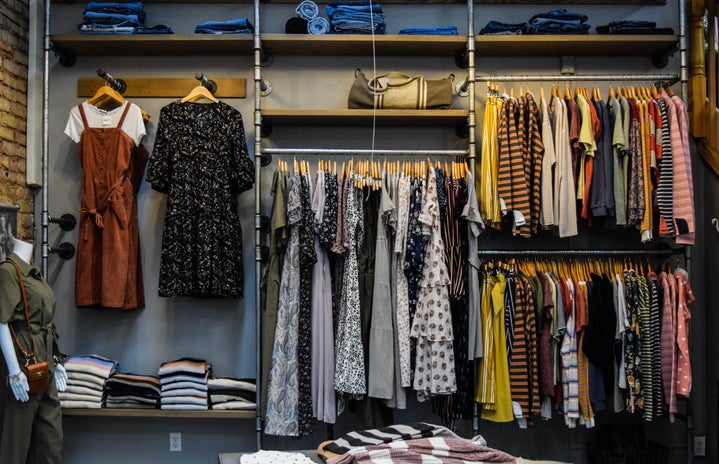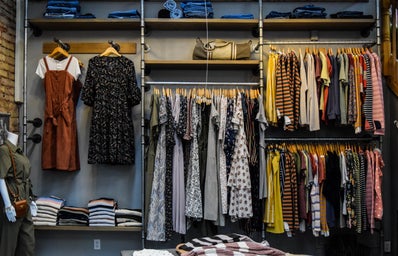Skinny or Curvy? What body size should women strive to be? While this question may seem outrageous, it is one that countless women may find themselves asking. And the answer to that question has, for a long time, been influenced by the media.
The pressure for Hollywood actresses to be skinny plants itself into the mind of the average American women, especially when she is constantly surrounded by the “ideal” depiction of skinny women in media. While women understand it may be unrealistic to look like a Victoria’s Secret model, there are times when confidence falters and a feeling of guilt or insecurity arises about their bodies.
In recent years, however, the average American woman may be experiencing less insecurity when reading magazines or watching TV. It seems as if the depiction of the stereotypical underweight, white celebrity or model is on its way out the door — or is at least less publicized — while the industry makes room for more diverse roles and models.
While it is great for women that attitudes are changing, plus-sized women have a long road ahead of them in order to achieve 100 percent acceptance.
The November 2013 issue of Elle magazine is proof of this. The magazine’s “Women in Hollywood” issue features actress Melissa McCarthy on its cover. McCarthy, a plus-sized actress who launched her career on the hit TV series Gilmore Girls, is now famous for her roles as the funny woman in box office hits like Bridesmaids, The Heat, and Identity Thief.
The magazine is meant to showcase McCarthy’s talent and that of her peers, but controversy over how she was depicted on the cover has taken the focus off of her career and placed the spotlight on her weight.
The cover — which has McCarthy in an oversized, dark gray cashmere Marina Rinaldi coat and a big, teased hairdo draping across her face — is regarded with scorn by a number of people for attempting to hide the plus-sized actress’ body. Many saw the cover as additional evidence that the fashion industry does not accept plus-sized women.
Slate was taken back with the styling choice, noting that “McCarthy’s hair covers a quarter of her gorgeous face, and with her hands stuffed deep into her coat pockets, the only visible flesh is a tiny triangle between the coat’s lapels and the briefest glimpse of calf.”
Despite the controversy, both Elle and McCarthy responded by saying the accusations were totally uncalled for and that people are reading too much into the cover.
Elle responded by saying, “On all of our shoots, our stylists work with the stars to choose pieces they feel good in, and this is no different: Melissa loved this look, and is gorgeous on our cover.”
McCarthy openly shares the same opinion as Elle. In a statement by McCarthy featured in New York magazine, she said, “What I found so bizarre is I picked the coat. I grabbed the coat. I covered up. I had a great black dress on but I thought, it comes out in November. I was so sick of summer. I live in Southern California. I was like, ‘Give me a big coat to wear. Give the girl some cashmere!’”
The accusations towards Elle are proof that America is not accustomed to seeing non-skinny models and celebrities in magazines. The number of plus-sized women in Hollywood is severely outnumbered by thinner women, but fashion magazines are embracing different body types more and more. Aside from McCarthy, Elle has had full-figure actress Gabourey Sidibe and plus-size singer Adele grace their covers in the past, and they are not the only magazine to take this route.
The industry began to embrace women of all sizes because too many women are tired of feeling insecure. They were also resorting to extremes to mimic the skinny look that women in Hollywood generally have. Looking at Hollywood now, one can argue that diversity in size, skin color and sexual orientation is more prevalent than it has ever been in the past.
There is no one size for women. Women everywhere come in just about every shape and size. And a great number of the women in America are considered to be “plus-sized” by the fashion industry, so it is no surprise that this change is finally occurring.
It is apparent that celebrities are using their influence and power to change the industry. Celebrities like Demi Lovato and Lady Gaga publicly addressed their problems with the pressure to be skinny and how they resorted to eating disorders to fit the “in” image of the time.
Other naturally curvy women like Mindy Kaling, who stars in The Mindy Project, Lena Dunham from the HBO show Girls and Christina Hendricks from the hit series Mad Men have all spoken out about their sizes, claiming to be comfortable and even happy with the way they look.
Some celebrities are ditching the skinny figure for a more realistic body type — and they are “bragging about it” while they do so. Celebrities like Megan Fox and Christina Aguilera opted to keep a little bit more weight on their bodies after having their children. According to Hollywood Reporter writer Merle Ginsberg, “Beyoncé and Rihanna are not reed thin, but they are wildly sexy.”
And isn’t that what actually matters? That a woman is healthy — most importantly — and confident no matter what her size? The obsession with numbers on the scale and the clothing sizes has overwhelmed women for too long. It seems as if women are finally putting their foot down and making the decision to be healthy and happy with themselves, rather than feeling insecure.
With the help of these Hollywood women and advertisements like the Dove “Real Body” campaign, women can again feel comfortable in their own skin and confident enough to take a stand to challenge the industry.
And once women can fully take charge of their bodies again, we can begin to focus on what is most important about the women in Hollywood: their talent — not their bodies.
According to plus-size model Emme Aronson, “The actresses don’t want to say, ‘I’m curvy.’ These actresses want to shout, ‘I’m talented.’ If they continue doing their incredible work, they’re in it to win it.”

